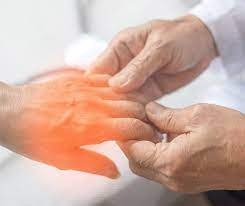The signs, causes, diagnosis, and course of therapy of muscular dystrophy
A collection of hereditary diseases known collectively as muscular dystrophy (MD) are distinguished by the gradual weakening and degradation of the muscles that govern movement. People of various ages and backgrounds are impacted by this illness, which lowers quality of life and needs close monitoring and assistance.

Even if there isn’t a solution at the moment, research is continuing, so there is hope for better treatments and results in the road. Through increasing awareness, funding research, and offering all-encompassing care, we can better enable people with muscular dystrophy and their families to fully enjoy life. Now let’s explore the main features of muscular dystrophy, including everything from its signs and symptoms to its underlying causes.
Symptoms of Muscular Dystrophy
The particular kind and degree of muscular dystrophy may have a significant impact on the symptoms. Nonetheless, a few typical indications are:
Muscle weakness: A progressive weakening of the muscles, usually originating in the shoulders, thighs, hips, and pelvis.
Loss of muscle mass: Degeneration may make muscles seem thinner or smaller.
Walking difficulty: As leg muscles deteriorate, walking may become difficult or unstable.
Falling often: Weakness and instability, particularly in youngsters, may result in falling frequently.
Contractures: Tightening of tendons and muscles that results in a reduction in joint motion.
Breathing difficulties: Breathing-related muscular weakness may sometimes result in respiratory issues.
Causes of Muscular Dystrophy
Genetic abnormalities that disrupt the generation of proteins necessary for preserving healthy muscle tissue are the major cause of muscular dystrophy. These mutations may affect a number of genes, each of which is linked to a particular kind of muscular dystrophy. The most typical kinds consist of:
Duchenne Muscular Dystrophy (DMD): Mostly affecting males, DMD is characterized by fast deterioration of the muscles and is caused by mutations in the dystrophin gene.
Becker Muscular Dystrophy (BMD): Mutations in the dystrophin gene also cause BMD, which progresses more slowly than DMD.
Myotonic dystrophy: This kind affects both adults and children and is characterized by delayed muscular relaxation after contraction, myotonia, or stiffness in the muscles.
Face, shoulder, and upper arm muscles are the main targets of facioscapulohumeral muscular dystrophy (FSHD), which results in weakening and atrophy in these regions.
Muscular Dystrophy: Identification and Manipulation
Muscle samples, genetic testing, imaging investigations including MRIs, and physical exams are often used in the diagnosis of muscular dystrophy. Though there isn’t a cure for muscular dystrophy yet, there are a number of treatment options that are meant to help control symptoms, enhance quality of life, and decrease the disease’s development. These might consist of:
The goals of physical therapy are to preserve range of motion, avoid contractures, and enhance strength and flexibility.
assistive technology: People with muscular dystrophy may preserve their freedom and mobility with the use of wheelchairs, braces, and other helpful technology.
Medication: For certain forms of muscular dystrophy, medication may help control symptoms including cardiac issues and rigidity in the muscles.
Gene therapy: Although still in the early phases, new therapies such as gene therapy show promise in addressing the genetic abnormalities causing muscular dystrophy.







